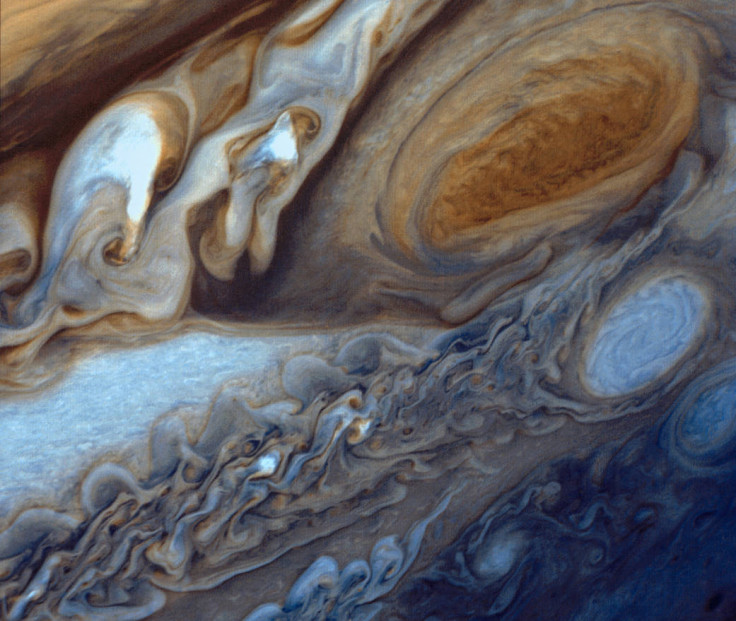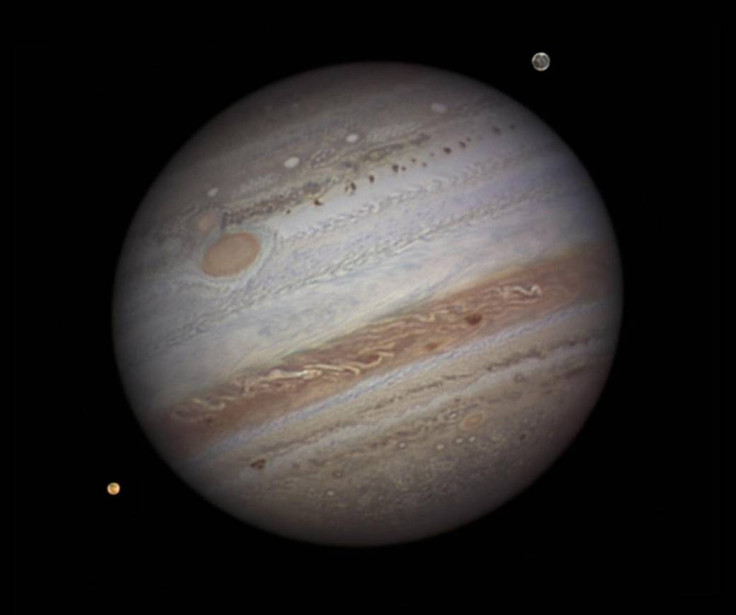Great Red Spot appears to be the heating force behind Jupiter's unusually warm upper atmosphere
Massive storm in Jupiter's southern hemisphere could solve Jupiter's 'energy crisis', scientists say.
Jupiter's Great Red Spot could be the mystery source of energy heating the planet's upper atmosphere. The upper atmosphere above the huge anticyclonic storm is hundreds of degrees hotter than anywhere else on the planet, scientists have discovered, indicating it could be involved in Jupiter's baffling "energy crisis".
The Sun provides heat to Earth's atmosphere, heating up areas 250 miles above its surface. Despite being five times further away from the Sun, Jupiter's upper atmosphere is comparable to that of Earth. The source of the energy providing this heat is a mystery and attempts to explain it have been unsuccessful.
In a study published in the journal Nature, researchers from the University of Boston in the US and the UK's University of Leicester observed the planet using infra-red light to look at the temperatures above the Great Red Spot.

"With solar heating from above ruled out, we designed observations to map the heat distribution over the entire planet in search for any temperature anomalies that might yield clues as to where the energy is coming from," said James O'Donoghue, lead author of the study.
Their findings showed a huge temperature spike just above the storm – the largest in the solar system – leading them to suppose it could be involved in the unusually warm atmosphere: "This direct observation of a localised source of heating provides strong evidence for coupling between the lower and upper atmosphere," the team wrote.
"We could see almost immediately that our maximum temperatures at high altitudes were above the Great Red Spot far below – a weird coincidence or a major clue?" O'Donoghue added.

Luke Moore, co-author of the study, said the Great Red Spot was always a "terrific source of energy" that could potentially heat Jupiter's upper atmosphere, but researchers had no evidence to show what effect it had on temperatures at higher altitudes. The team said the heating is probably caused by "upwardly propagating acoustic or gravity waves".
O'Donoghue said: "Energy transfer to the upper atmosphere from below has been simulated for planetary atmospheres, but not yet backed up by observations. The extremely high temperatures observed above the storm appear to be the 'smoking gun' of this energy transfer, indicating that planet-wide heating is a plausible explanation for the 'energy crisis.' "
© Copyright IBTimes 2025. All rights reserved.






















